Wondering how to make Ricotta Cheese at home? My homemade Ricotta Cheese is easy to make with only 3 ingredients and takes just 30 minutes to be ready. Just heat the milk, add the lemon, drain the curds, and your cheese is ready!
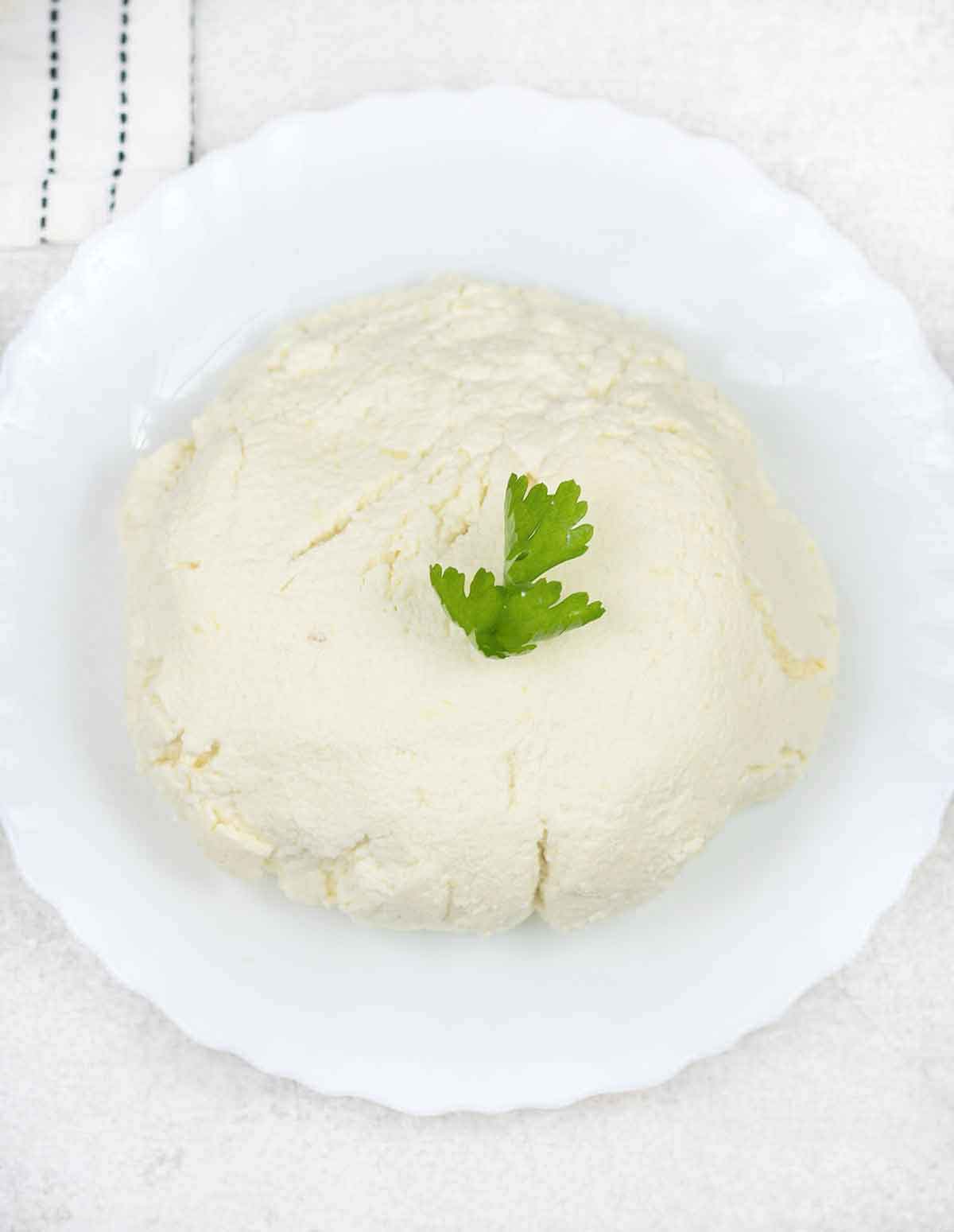
Homemade Ricotta Cheese
I like to have homemade ricotta in my house. To spread it on toast, use it on baking, or top it over my Friday night pizza. Ricotta cheese makes everything better, even scrambled eggs!
That’s why I bring you a super-easy way to make the ricotta right at home. Believe me, once you start preparing your own Ricotta Cheese at home, you’ll never go back to buying it over the counter.
Why Make Your Own Ricotta Cheese?
I know what you’re wondering. Sure, whipping up some homemade cheese may be tastier and help us save on some extra bucks, but what about the time?
It’ll still take time to make this cheese at home, right? Wrong! Because most of the time that goes into making this dish requires no effort on your part at all. The entire process takes about 30 minutes, while your hands-on involvement is required for barely 10.
What’s more? When you make Ricotta Cheese at home, you can control the consistency of the cheese; something you can’t do when you buy a tub from the grocery store!
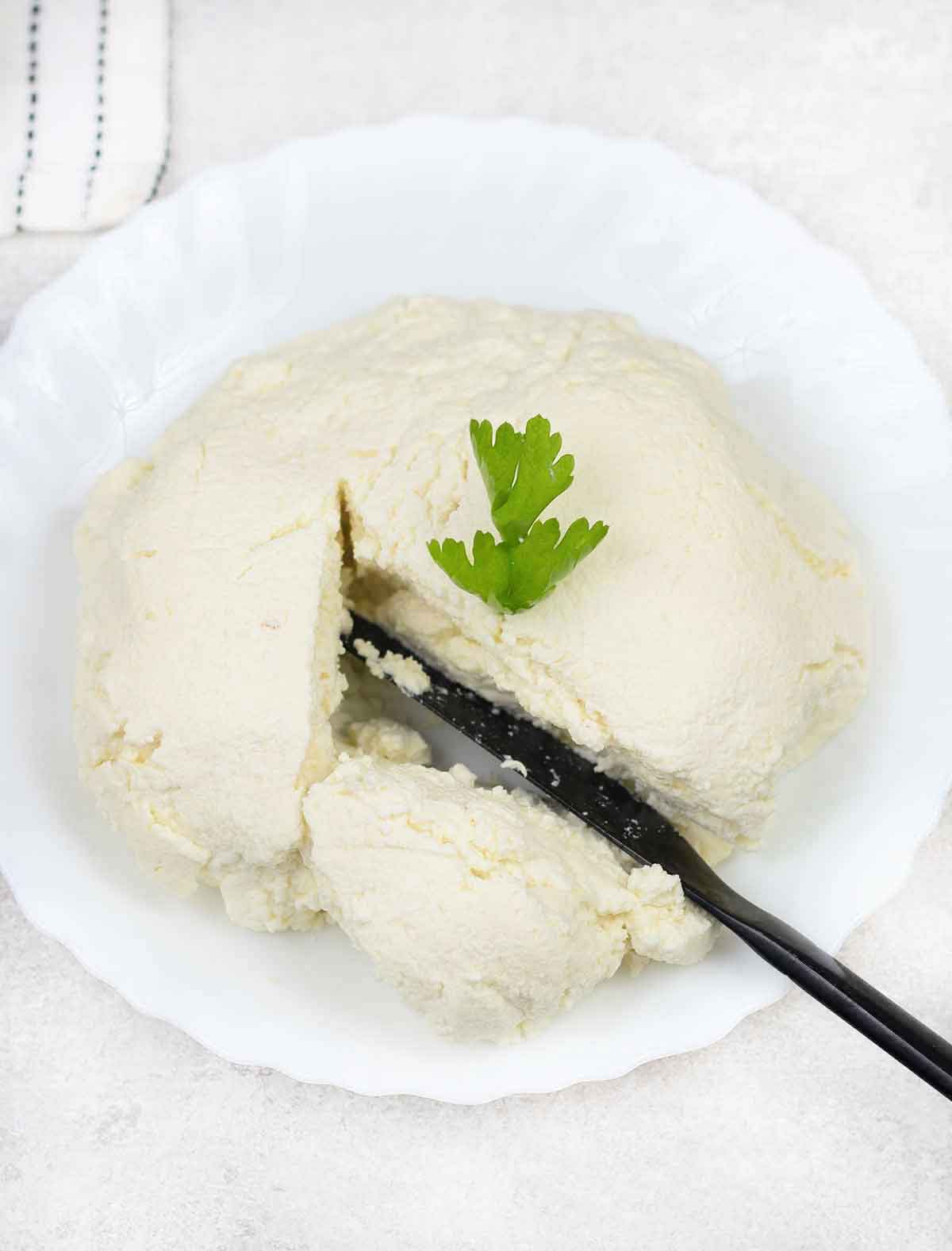
What Kind of Milk to Use
Right off the bat, I know this is what you’re wondering. Though I used full-fat cow milk, when I was making my Ricotta Cheese, you can use any full-fat milk you’d like.
Whether you choose goat, cow, sheep or buffalo milk is up to you. All I recommend is for it to be full fat, also often referred to as whole milk.
Ingredients
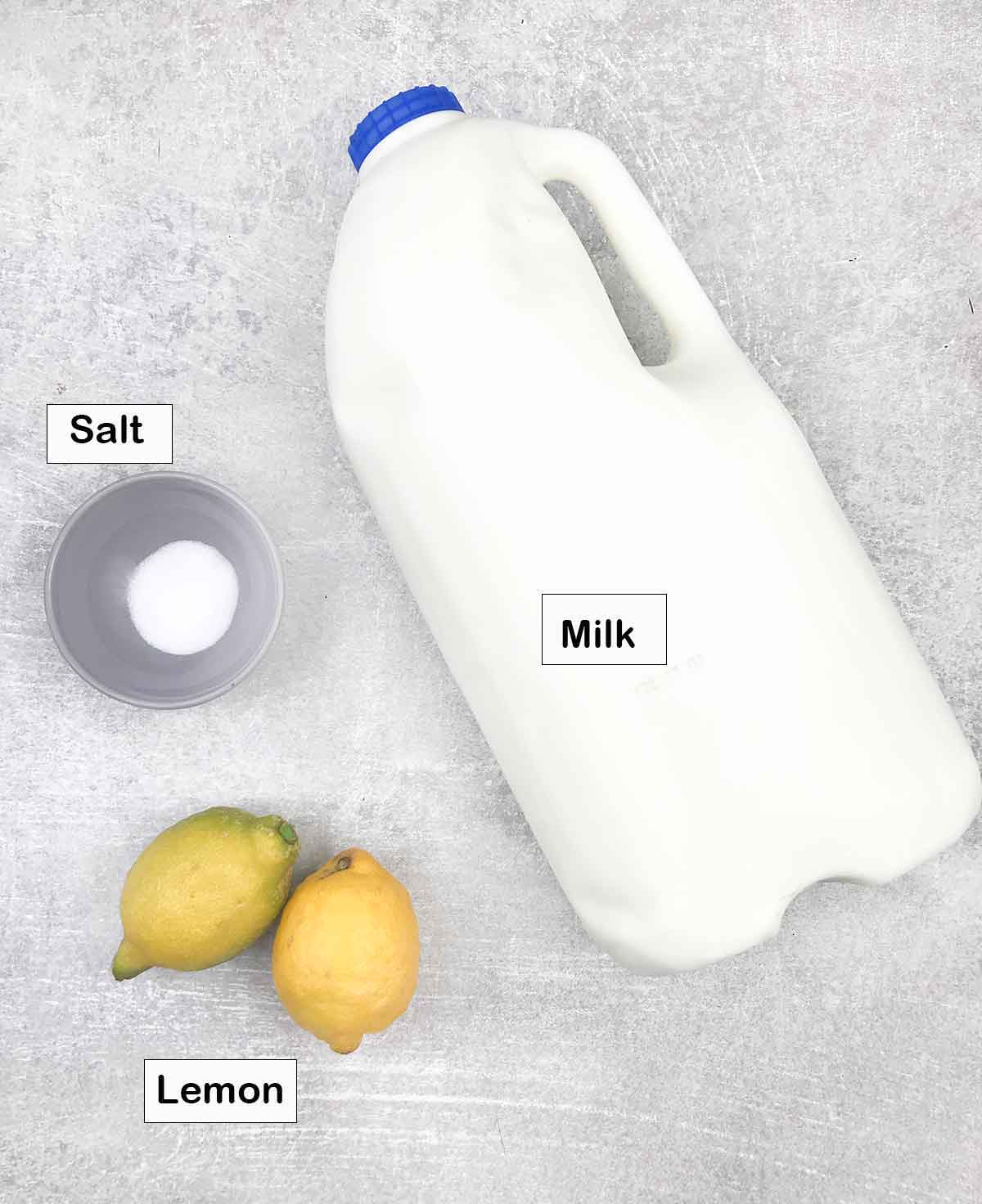
Note: This is an overview of the ingredients. See the recipe card for full information on ingredients and quantities.
- Milk: I recommend using whole milk, but any fresh milk will work fine but not as rich.
- Lemon juice: I use freshly squeezed lemon in this recipe. You may use white distilled vinegar instead.
- Salt (optional): Regular table salt to taste.
Supplies you will need
- A large saucepan: Large enough to add all the ingredients.
- Cheesecloth: You’ll easily find it at a grocery store.
- Large Bowl/Pot: To collect the whey when it separates from the cheese curds.
- Sieve: To help drain the whey.
How To Make Ricotta Cheese
Step One: Warm The Milk
First, you’ll want to take out a large saucepan. It should be big enough to hold the entirety of the milk and still have room left at the top for when the milk gets hot and starts to form foam. In this saucepan, warm the milk over medium-high heat until it reaches 200°F.
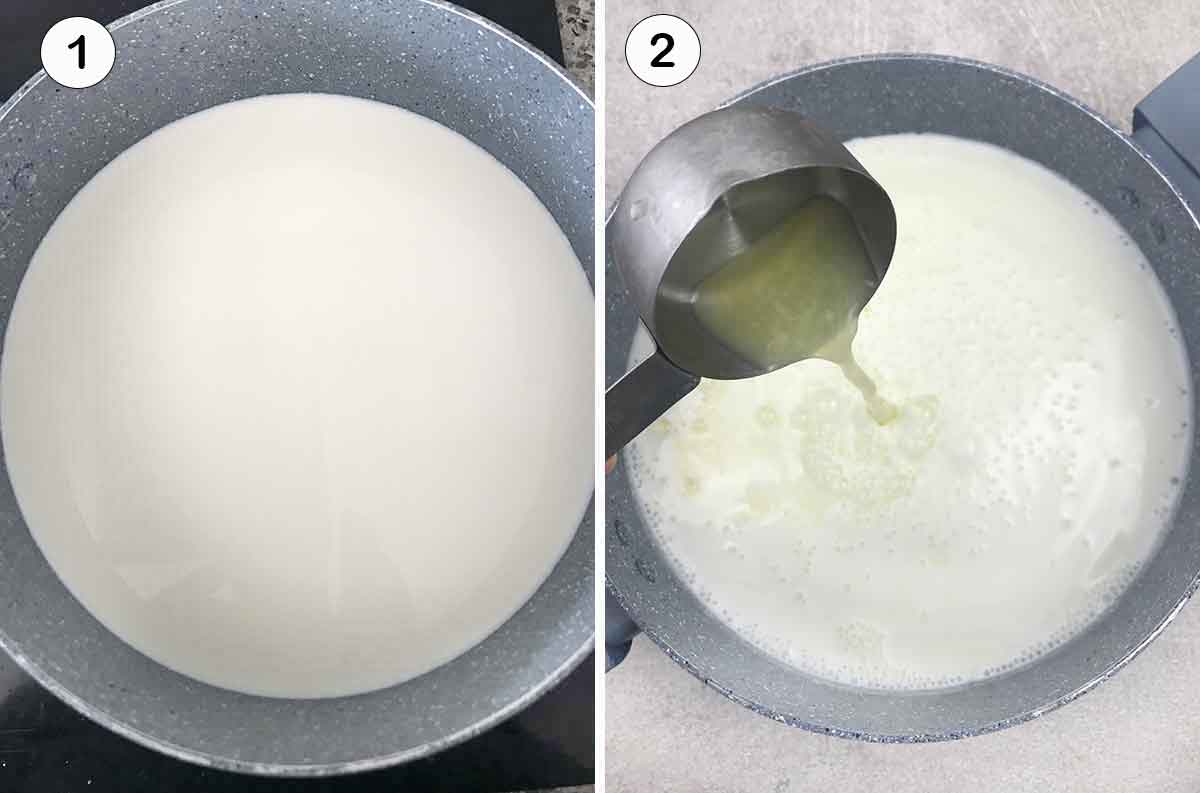
Step Two: Add In Lemon Juice and salt
If you don't have a thermometer, remove the milk from the heat once it gets foamy and starts to steam. Now, add the lemon juice and salt, and stir gently so that it integrates well into the milk.
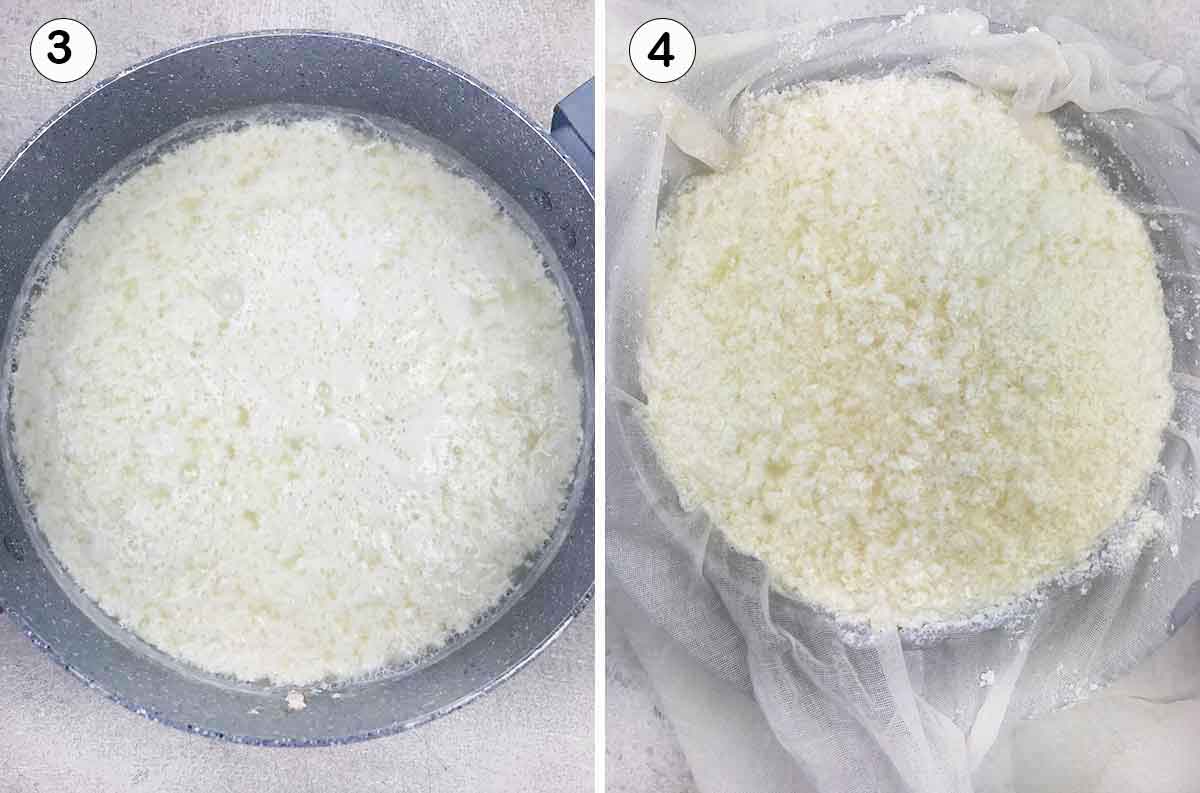
Step Three: Let The Milk Curds
Now, set this mixture aside for 10 minutes. You will notice that the milk will start to separate into clumps and cloudy yellow-coloured water. The clumps are called white curds, while the cloudy water is referred to as whey.
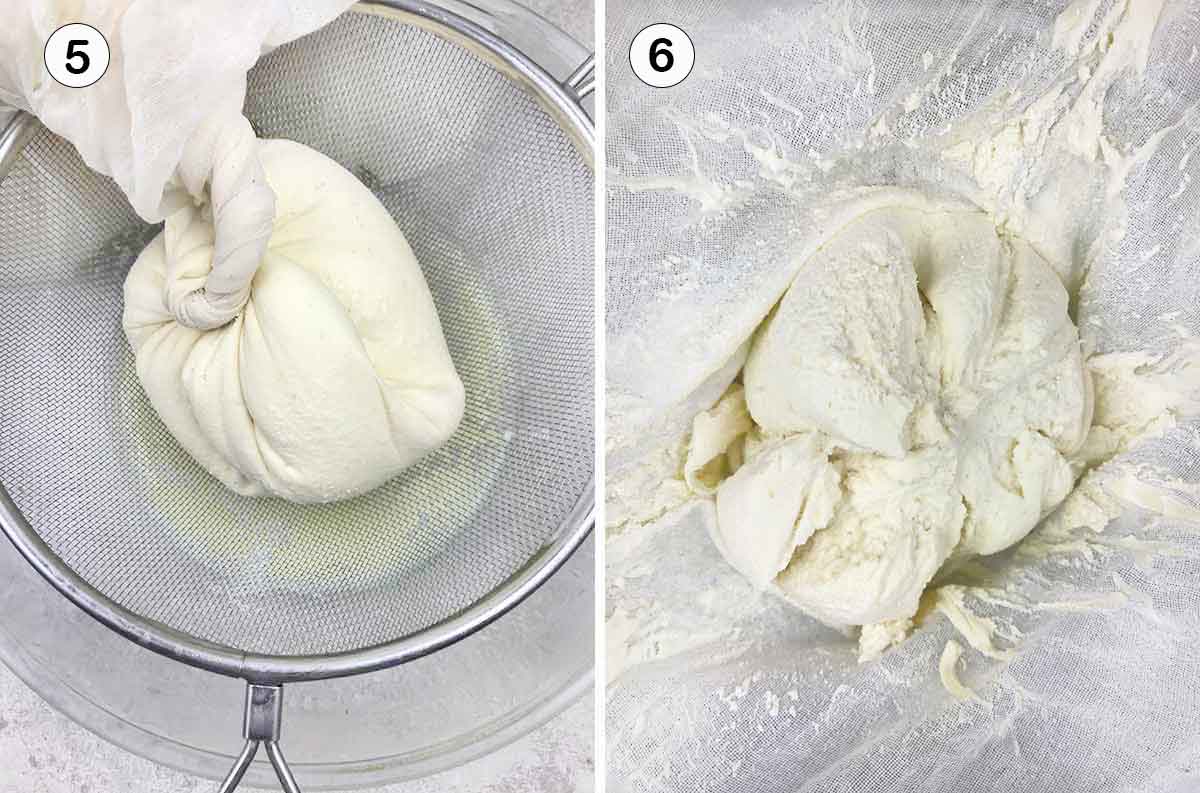
Step Four: Separate The Curds From The Whey
Place a sieve over a bowl or pot. Line this sieve with a cheesecloth. Now pour the mixture you just created into the saucepan through the sieve and cheesecloth. The white ricotta curds will stick to the cheesecloth, while the whey will drain right through and into the pot.
Squeeze the cheesecloth if necessary to completely drain the whey from the curds. Then, leave the curds draining over the pot for 10-30 minutes to ensure that all the whey is completely drenched in the pot.
After it has been drained, transfer the cheesecloth holding the Ricotta to a container and store it in the fridge.
Freshly made Ricotta Cheese is ready and ready to be added to all your favourite foods!
Helpful Tips
- You can control the consistency of your cheese by controlling how much whey you drain.
- If you plan on making desserts with this Ricotta Cheese, you might want to skip the salt.
- If you don’t have cheesecloth, you can use any regular muslin cloth to drain the cheese. Just ensure that it is clean.
- Use a slotted spoon to scoop the delicate curds out of the whey.
- This recipe yields about 1 ½ cups (300 g) of ricotta cheese. So feel free to double the recipe if you want.
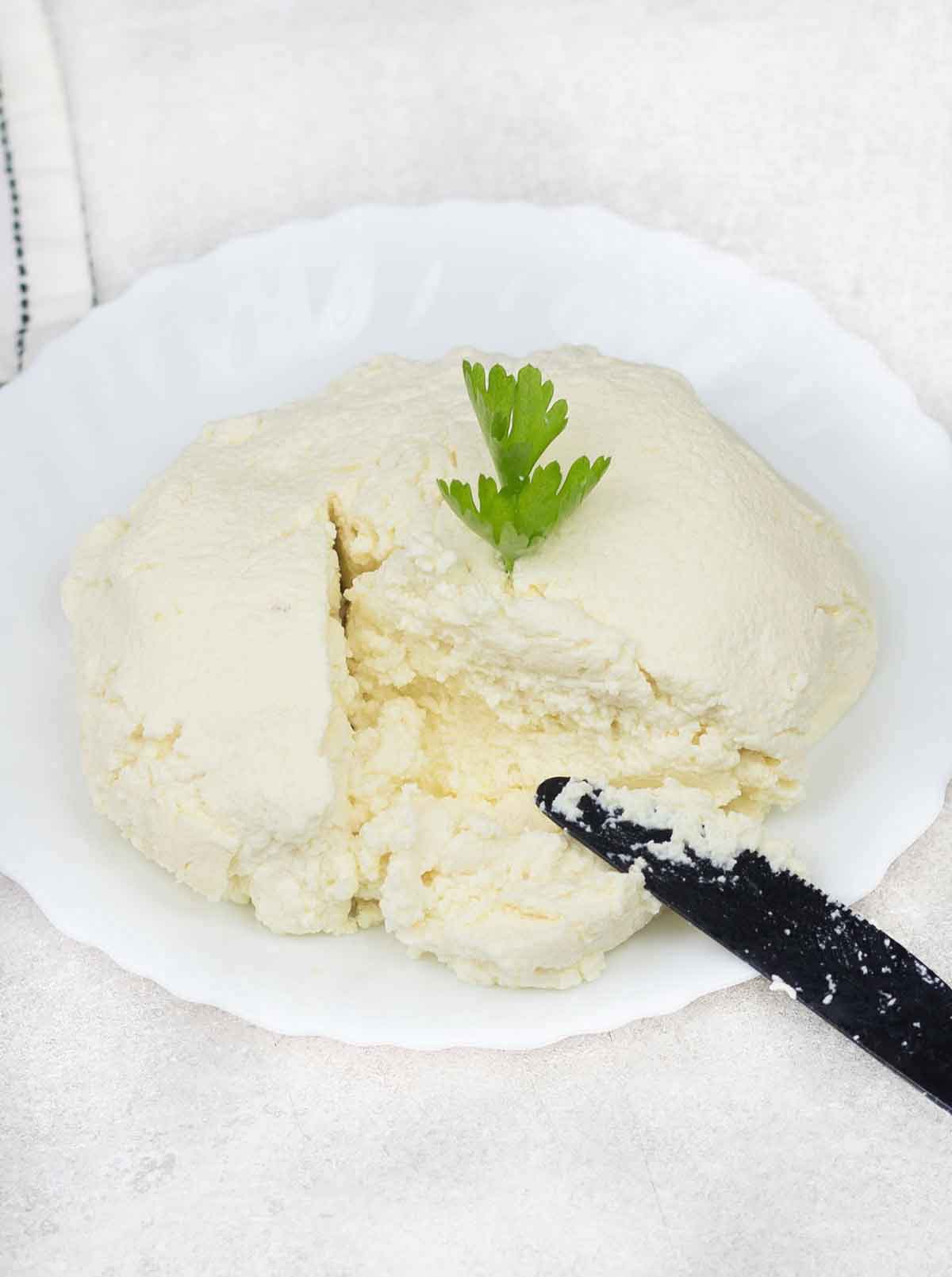
How To Serve
Ricotta cheese is best savoured over Italian dishes such as Italian Shrimp Pasta Salad or topped over some good-old pizza such as Fresh Spinach Mushroom Pizza Or Roasted Vegetable Pizza.
You can also garnish some roasted chicken with Ricotta or spread it over some savoury tarts.
FAQs
Rubbery cheese might be a result of overheating or boiling the milk; the milk needs to be at 200F for best results.
Yes, you can use raw milk, cow's milk or any other milk you like. However, using Ultra-pasteurized milk is not recommended in making cheese recipes.
To store it, put it in a covered container in the fridge, it will last for 3-4 days.
Use Homemade Ricotta Cheese In
- Spinach Mushroom Pizza
- Pizza Rolls With Puff Pastry
- Roasted Vegetable Pizza
- Pizza Dough With Plain Flour
- BBQ Chicken Pizza
- Kimchi Pizza
Follow me on Pinterest and Instagram to keep up-to-date with all new recipes.
Recipe Card
Incredibly Easy Homemade Ricotta Cheese
Equipment
- Cheesecloth
- Sieve
Ingredients
- 2 litre whole milk
- ⅓ cup lemon juice
- 1 teaspoon salt , optional
Instructions
- In a large saucepan, warm the milk over medium high heat until it reachs 200°F. If you don't have a thermometer, take the milk out of the heat once it gets foamy and starts to steam.2 litre whole milk
- Now, add the lemon juice and salt, stir gently to combine, and set aside for 10 minutes. You will notice that the milk is separated into clumps (white curds) and watery, yellow-colored (whey).⅓ cup lemon juice, 1 teaspoon salt
- Set a sieve over a bowl or pot and line the sieve with cheesecloth. Pour the curds and whey through the cheesecloth. Squeeze and let the curds drain for 10-20 minutes.
Notes
- You can control the consistency of your cheese by controlling how much whey you drain.
- If you plan on making desserts with your cheese, I recommend skipping the salt.
- If you don’t have cheesecloth, you can use any regular muslin cloth to drain the cheese. Just ensure that it is clean.
- Use a slotted spoon to scoop the delicate curds out of the whey.
- This recipe yields about 1 ½ cups (300 g) of ricotta.

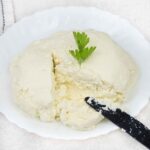
Comments
No Comments